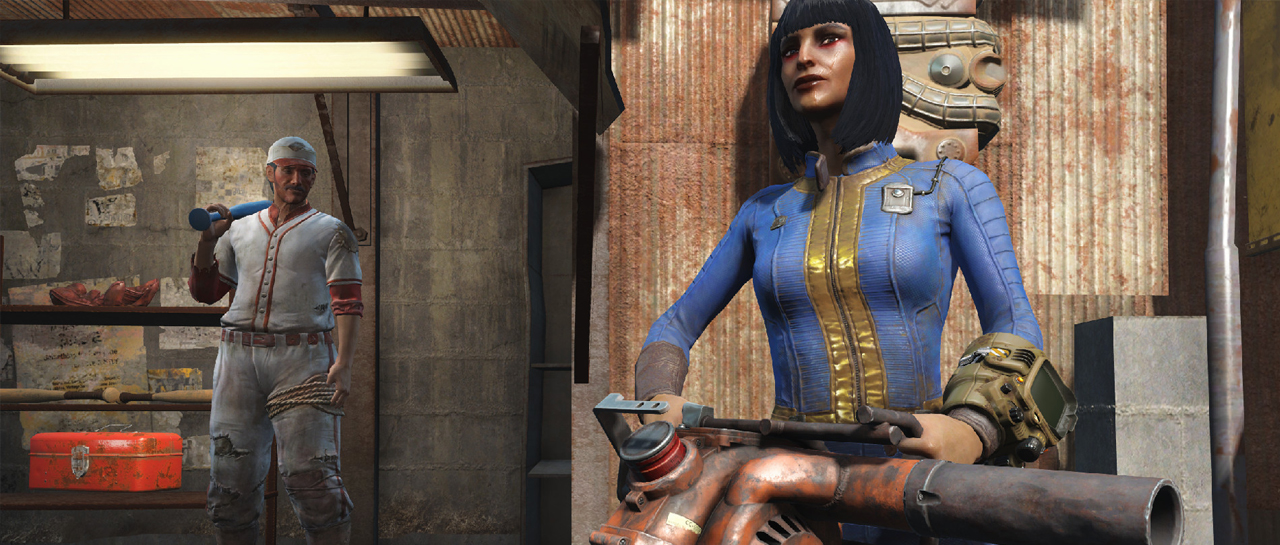Set toes about a fist measure away from the wall, raise your hands up against the wall and from there to a deep squat down and up. Sounds easy, doesn’t it?
In reality, wall squatting is a movement that many find almost impossible. It reveals maximum body mobility, lower limb muscle strength and body control.
After all, wall squatting is also a technique where age is not an obstacle. This became clear when an occupational physiotherapist Riikka Ilmivalta tested wall squats in ten people of different ages.
Most testers bump into their butts because movement requires braking force from the abdominal muscles, hip flexors, and front of the leg in addition to back and hip movement – and sitting work impairs all of these qualities.
“The only one who could make the move was a 70-year-old grandmother! He squealed a squat as he came and wondered why the 10-year-old grandson couldn’t do the same, ”Ilmivalta laughs.
Then why did Grandma succeed?
“He had good mobility and muscle strength, but also proportions suitable for wall squats: long legs but short femurs. Long femurs can prevent or challenge getting into position, ”Ilmivalta explains.
Unlike a regular squat, a wall squat prevents the wall from compensating for movement by moving your upper body or knees forward. For this reason, with long-legged, the focus comes so far back that results in bloating.
“Movement can be made easier by bringing your legs further away from the wall, widening your feet and turning your toes more outwards, shortening the lever arm.”
“
“There’s a lot of sitting these days, and the body’s natural range of motion, or maximum mobility, is no longer needed.”
Although a wall squat may seem impossible at first, a trajectory is possible. The actual deep squat is our body’s natural resting position. Or so it should be, Ilmivalta reminds.
The fact that wall squats pose challenges for so many tells us not only about the performance of the body, but also about the problems of our welfare society. The foremost sees that body use has been minimized in the Western lifestyle and body overload has become a social problem.
“Before, people did physical work, sitting and eating on the floor, which maintained mobility and muscle strength. Nowadays, people sit a lot, and the body’s natural movement path, ie maximum mobility, is no longer needed, ”says Ilmivalta.
The closer the legs are in the starting position to each other, the more the thigh muscles work during the movement. The wider position activates the gluteal muscles again.
Obsolescence therefore, it is recommended to take a wall squat applied to your body as a break exercise, which you do a couple of times during the working day.
“This is a really effortless challenge, as it requires nothing but elastic pants!”
If the wall squat is not yet successful in the target position, i.e. the feet close to the wall at the width of the pelvis, it is advisable to facilitate the movement by widening the position of the legs and bringing the legs further away from the wall. The foremost himself squats his toes a few inches off the wall, allowing the movement to challenge appropriately but to be done.
“It pays to start training with a relaxed and permissive attitude. Give your body time to get used to the movement. Even if the movement does not succeed immediately, training makes you a champion. ”
In wall squats, it is important to ensure proper alignment of the body, such as that the knees and feet are in the same direction. The Infantry advises to always squat on a trajectory that feels safe and controlled. You don’t have to get to the bottom, he reminds.
“
“It pays to start training with a relaxed and permissive attitude.”
Wall squat is a great general movement as it develops mobility, muscle strength and body control at the same time. There are other benefits. Because the wall squat puts the body’s big muscles to work, even a few squats are enough to speed up fat and sugar metabolism to counteract the presence.
The wall squat prevents the sedentary neck-shoulder and shoulder problems of the sedentary worker by improving the mobility of the upper limbs and spine. Increased ankle mobility, on the other hand, keeps ankle misalignments and sciatica at bay.
A wall squat also requires strength from the muscles. When the muscles are in order, the housework is lightened, the shopping bags feel lighter and the walks are accelerated. Good muscle condition also protects joints from injury. Regular squats also prevent the emergence of movement restrictions, Ilmivalta reminds.
Here’s how to do a squat:
Settle on your face against the wall about a fist measure away from the wall. Keep your heels at the width of your hips, feet out. Place your hands up against the wall and squat as low as possible and get up. Make sure your knees point in the same direction as your feet throughout the run, and that your abdominal muscles support movement as your back flexes. Allow your hands to slide against the wall with the movement down and up.
Just squat down so that the movement feels controlled. Mobility, strength and body control gradually improve. If the movement is not successful, step further away from the wall or widen the position of the legs.
Movement increases mobility of the upper limbs, spine, hips and ankles. Strengthens the thigh and buttock muscles. Improves body control.
The three most common challenges
Does it tighten the lower back, chest, upper back, shoulders or ankles? The challenges of wall squatting are always individual, but here the most common.
-
Do the heels get off the floor? Stretch your ankles and strengthen your abdominal muscles and hip flexors. To facilitate movement, widen the position of the legs and check that the feet do not turn to the inside edge but remain straight.
-
Do your hands come off the wall? Strengthen the upper abdominal muscles and stretch the pectoral muscles. Move your toes further away from the wall to facilitate movement.
-
Are you bouncing on your butt? Strengthen hip flexors and anterior thigh muscles.
Squat as low as you can and come back up. Facilitate movement by widening the position of the legs and turning the toes more outwards, as well as taking the support from the door frame.
If the wall squat is not yet successful, Practice these movements first:
1. Deep squat familiar
Stand wide in the crotch position, the feet slightly outwards. Grab the post, door handle, or ask a friend to take your hands. Squat as low as you can. The support facilitates movement and helps to find the right trajectory. Repeat 3-6 times.
Movement prepares the deep squat in the trajectory: opens the hips, ankles, inner thighs, calves and lower back.
2. Increase mobility
Visit the four-container: knees under the hips and wrists under the shoulders. Get up from there to the dog looking down. With your hands, push the floor away from you, your chest towards your thighs, twist your elbows lightly towards each other. Stretch the heels towards the floor. Then bend your knees and bring your chest to your thighs.
Keep your heels in place as much as possible. Hold for 20-30 seconds and repeat three times.
Movement develops the mobility needed for wall squats: opens the chest, stretches the hind legs, calves and back, and increases the mobility of the shoulders.
3. Body control for squats
Stand in a wide crotch position with the feet slightly outwards. Rotate your shoulders back, bring your fingertips to your occiput, and aim your elbows at an oblique angle. Keep the shoulder line as open as possible and a slight sensation of sealing between the shoulders.
Keep your abdominal muscles tight and squat as low as you can so that your upper body position remains upright. Repeat 8-12 times.
Movement develops wall squat position control: increases chest, shoulder and lower back mobility, and improves whole body movement control and strength.
4. Lightened wall squat
Stand near the door frame and take your toes so close to the wall that you can’t squat down and up without support. Take support from the door to make the movement lighter and squat down and up at a slow pace 1-3 times.
Movement develops the maximum strength and mobility required for wall squatting, including by strengthening the thigh muscles.
Sport is a magazine focused on exercise and well-being, edited by Helsingin Sanomat. The story has appeared in issue 9/21 of Sport magazine.
Read more: If standing on one leg feels easy, it is unlikely to develop – This is the kind of workout that really improves balance
Read more: There are only six movements in the world’s most famous gym program – Such is Arnold Schwarzenegger’s “golden spruce”, the power of which is still undeniable
Read more: Jump rope training is infinitely effective, but the right tool can decide if the hobby continues – HS tested six different jump ropes and found a five-star rope
.
#Training #challenge #training #challenge #separates #seated #workers #impossible #move #easy







